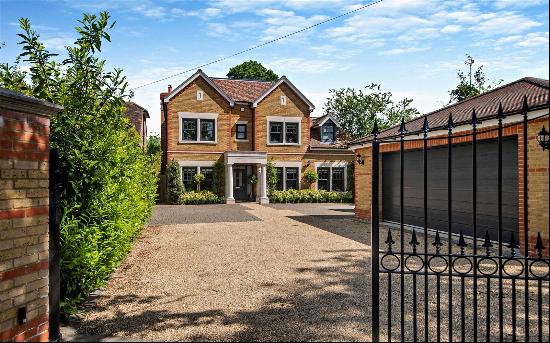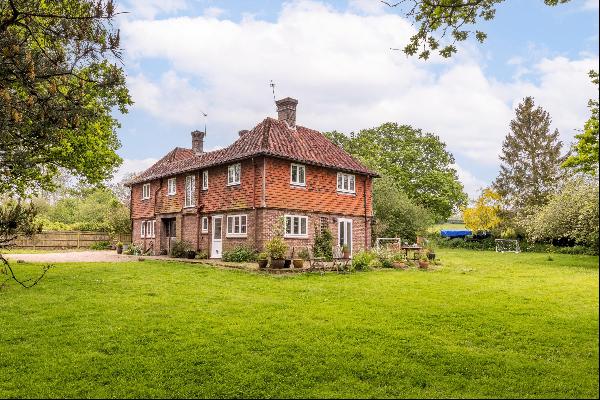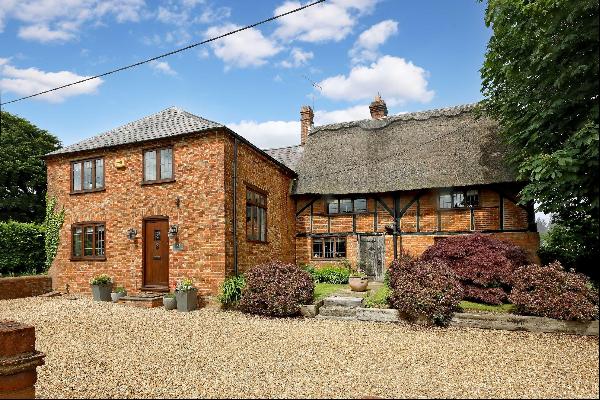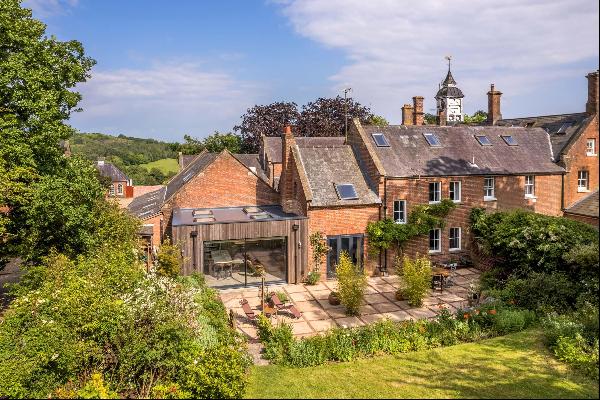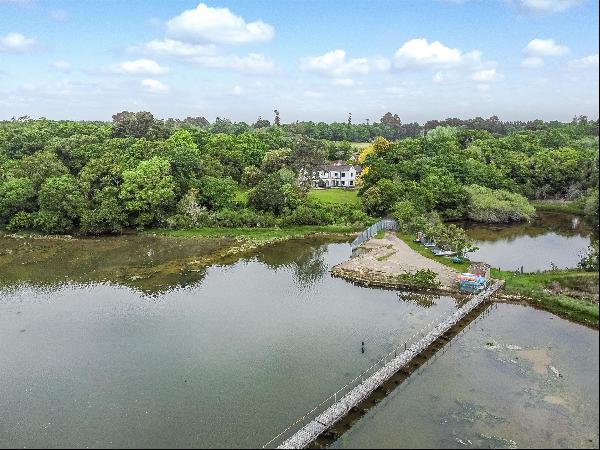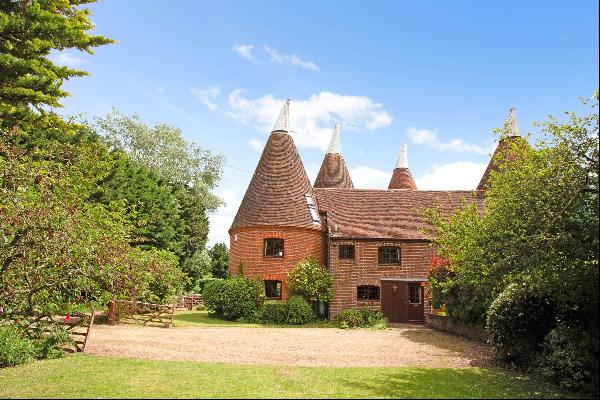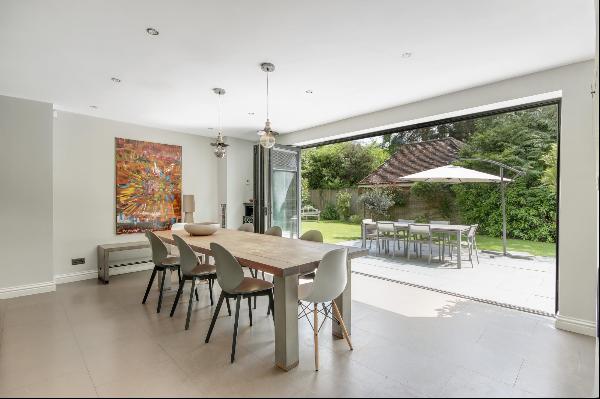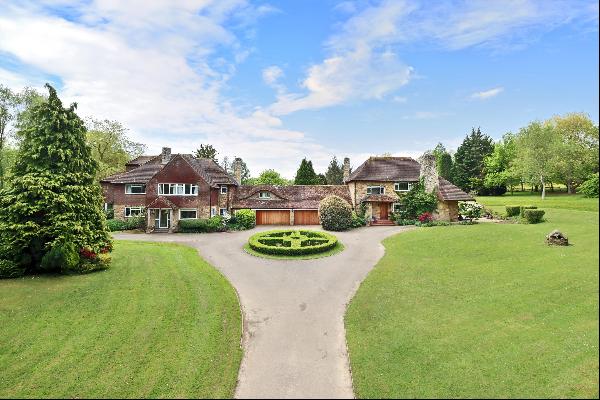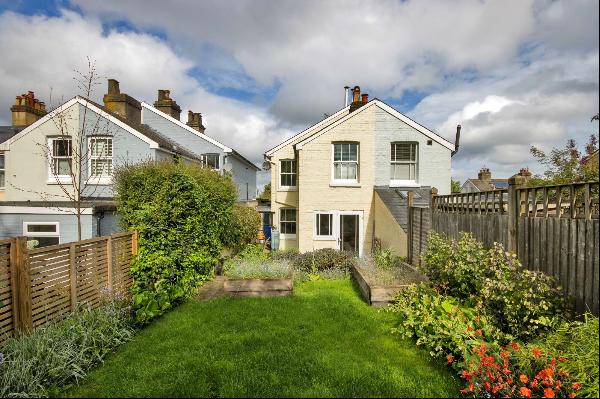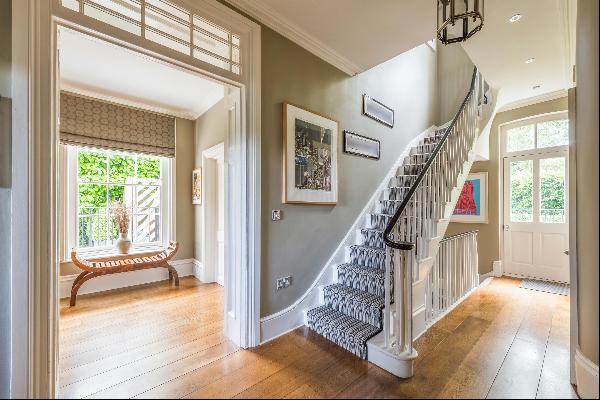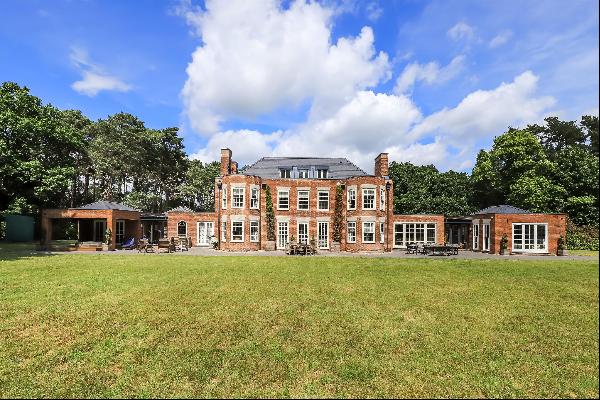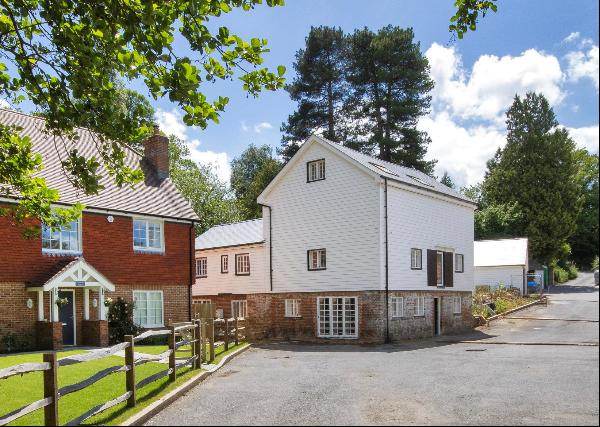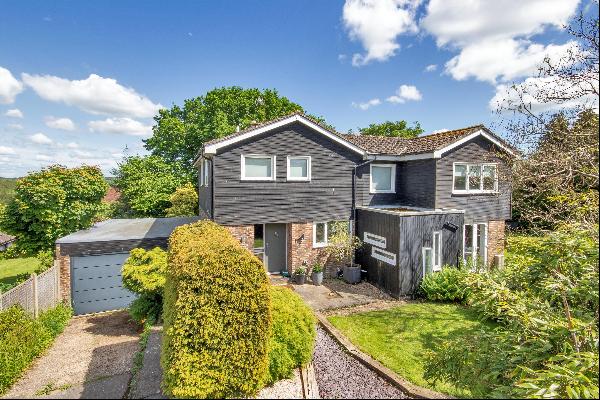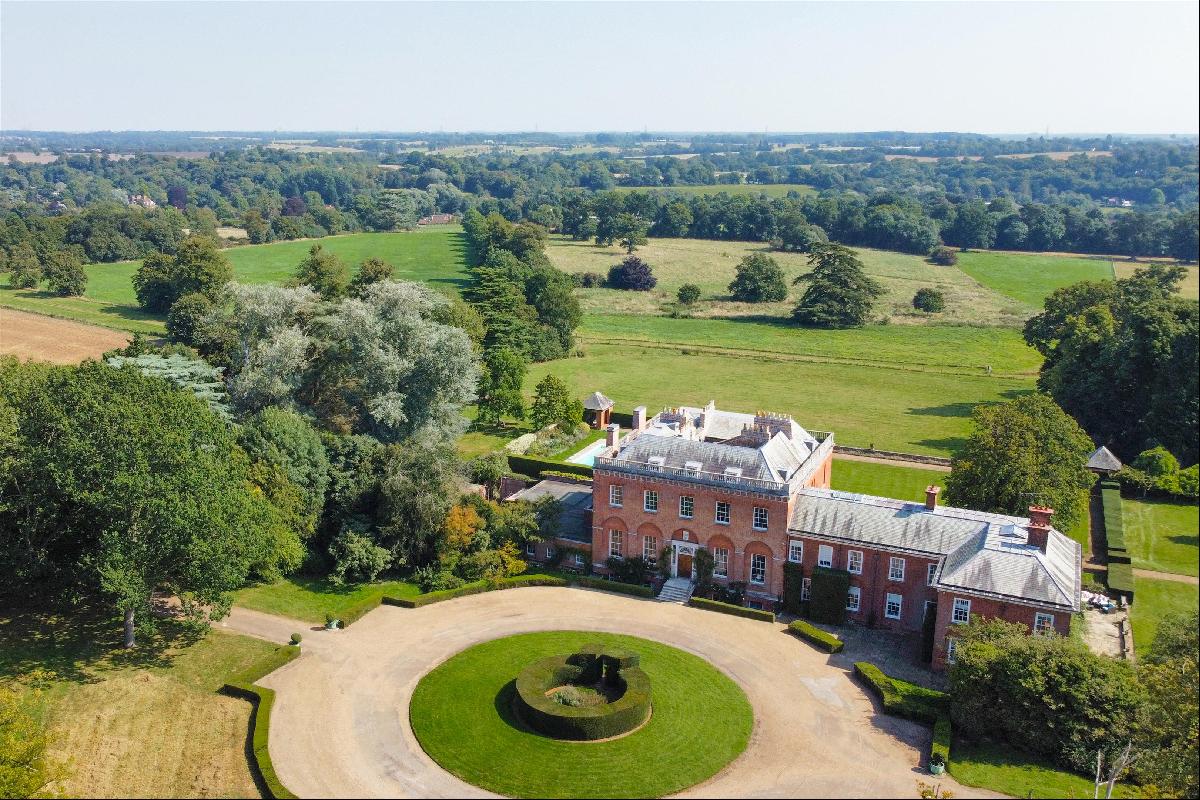
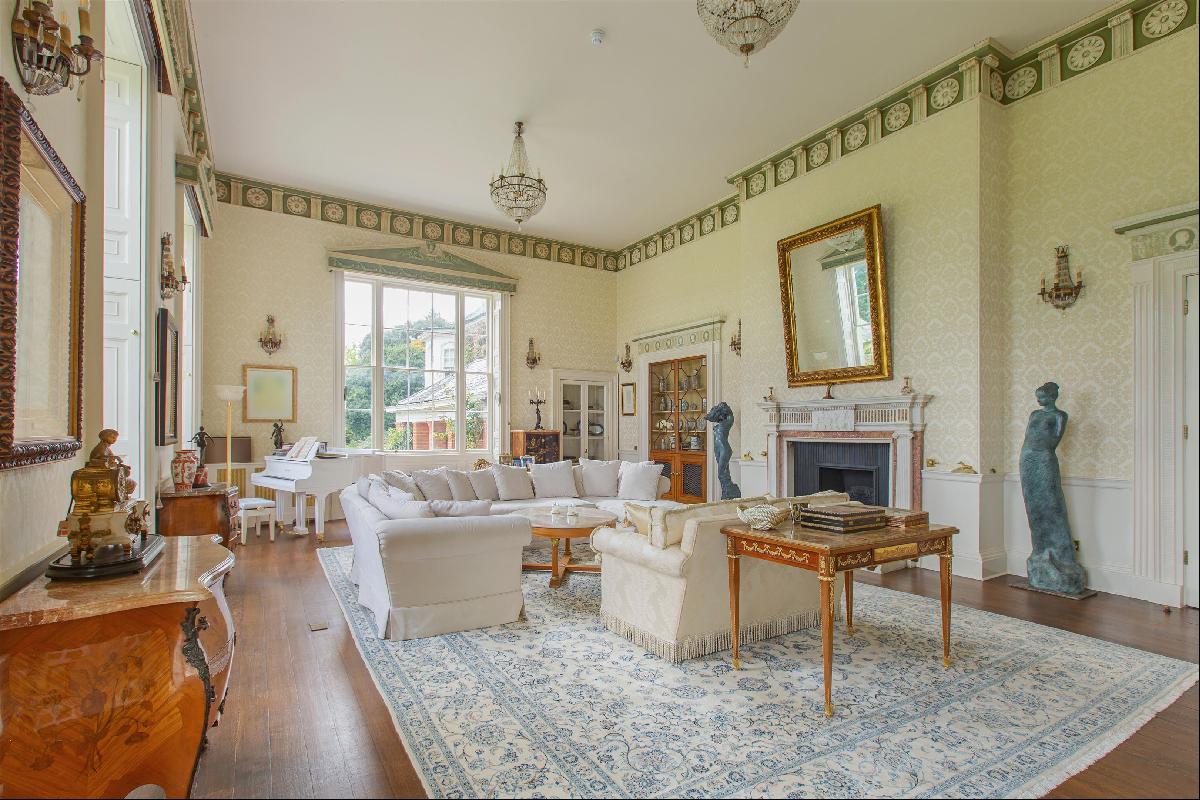


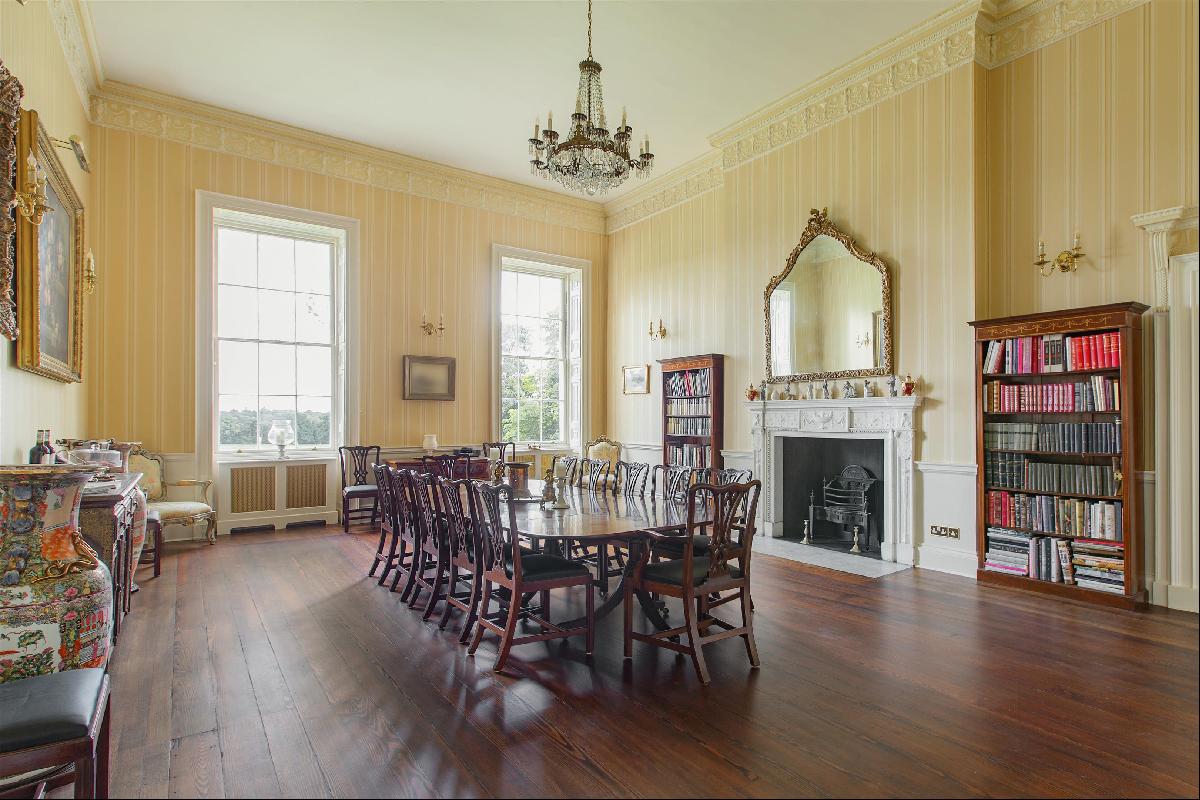




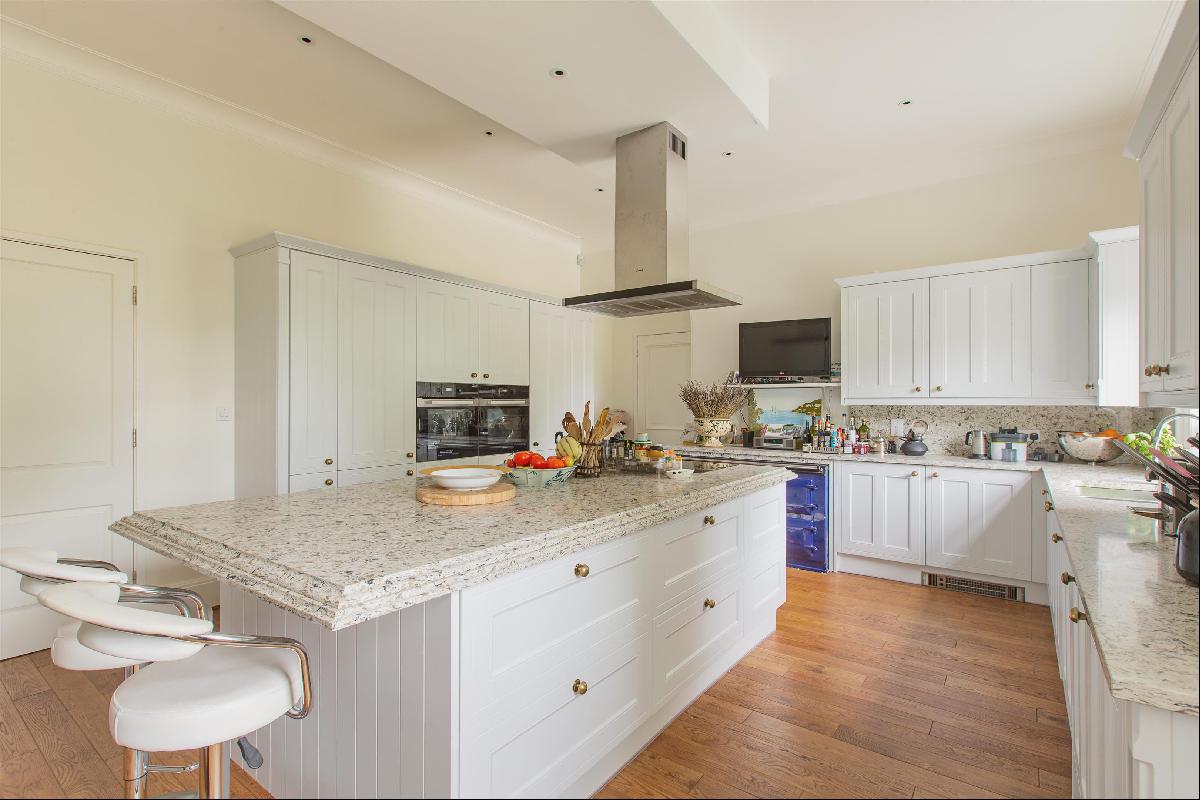
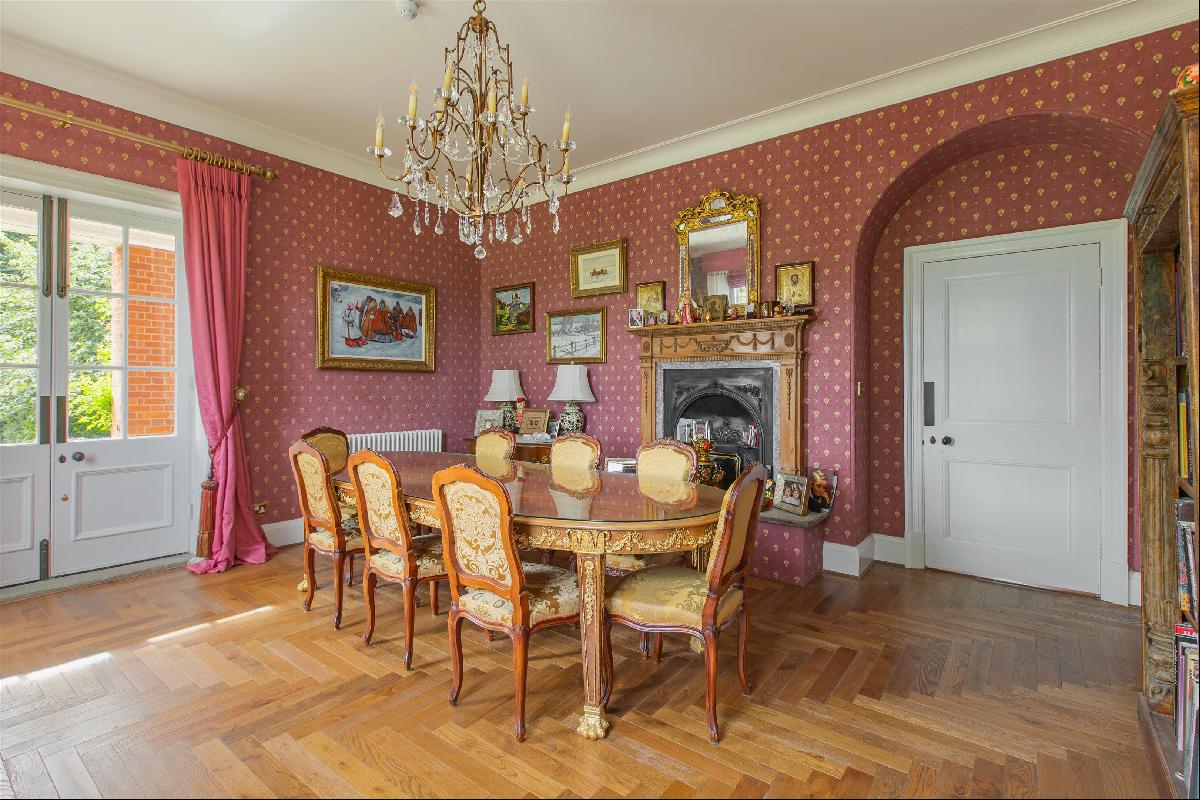


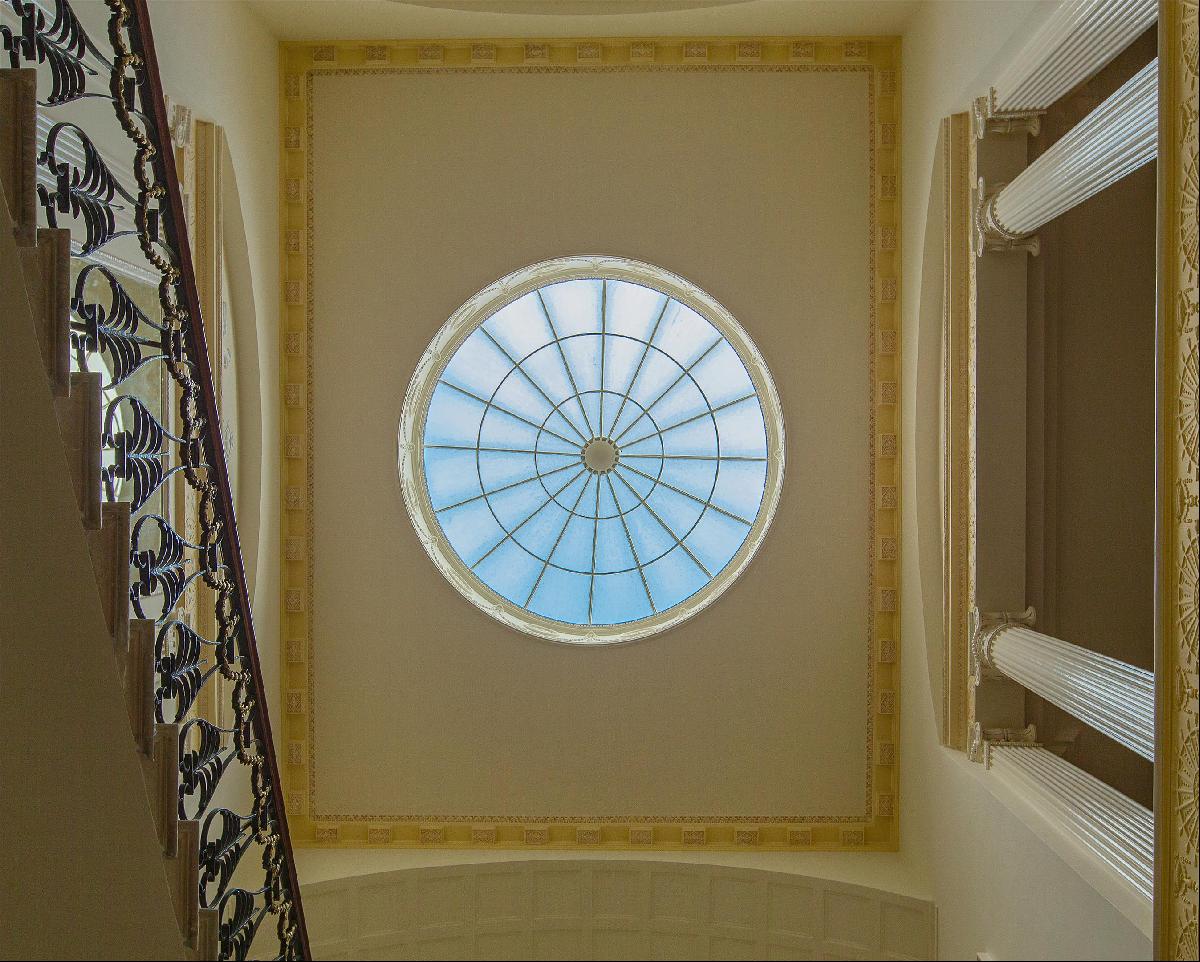
- For Sale
- Guide price 10,000,000 GBP
- Build Size: 17,573 ft2
- Land Size: 17,574 ft2
- Bedroom: 14
- Bathroom: 8
A handsome Grade I listed Georgian country house in a beautiful parkland setting on the edge of one of Hertfordshire's most sought after villages.
The house is approached along a tree lined avenue from the Grade II listed gates on the main street in Much Hadham through parkland and around the house to arrive at the impressive west side with a large circular gravel sweep with a yew circle at its centre and bordered by manicured box hedges.The house is a substantial, square, red brick house with stone dressings and a hipped tile roof. A stone balustrade parapet is carried round the top of the building with a bracketed cornice below.Moor Place House is surrounded by gardens and parkland. Outside the nursery wing to the east and south of the house there is a flagged terrace extending from the loggia and covered veranda. This is separated from the sunken lawns below by rose beds and a low wall. The lawns stretch out in front of the east side of the house and lead the eye to the parkland beyond, separated by a low wall and punctuated at either end by decorative summer houses or pavilions depicting God and Mammon which were completed in 1936 and are Grade II listed.At the northern end of the garden the heated outdoor swimming pool is screened by a Leylandii hedge and wall.There has been a dwelling where Moor Place now stands since before the Norman Conquest when it was owned by the Bishops of London. By the 15th Century the land was held by a family called More who gave their name to the house, then known as Mores Place. The estate then passed to the Dalton family who it is thought built the Elizabethan house which preceded the current Moor Place.The estate passed through a number of families during the 17th and 18th centuries until 1750 when it was bought by James Gordon whose family owned Moor Place for over a century, four generations of them living there, during which time the original Elizabethan House was demolished and the existing Georgian house, designed by Robert Mitchell, was built along side, eventually being finished in 1779.Moor Place was sold in 1854 to Money Wigram. On his death, the estate was left to his son who five years later sold it to Mr F. H. Norman in 1886, who added what is now the basement flats on to the north of the house (designed by Norman Shaw). The south wing, known as the nursery wing and designed by Sir Ernest Newton, was added by Mr Norman in 1906, with lead work on a hopper head downspout on the wing bearing his monogram and date.In 1916, F. H. Norman died. Moor Place passed to his elder son Montagu Norman, Governor of The Bank of England from 1920 to 1944. In 1920, Montagu passed Moor Place to his brother Ronald, chairman of BBC and London County Council.The present owners bought Moor Place in 2013 and have undertaken a careful and sensitive restoration and refurbishment of the property.All in about 51 acres.
Moor Place is close to the much sought after village of Much Hadham. The market town of Bishop's Stortford is within 6 miles providing a wide range of shops and services.Moor Place is in a rural setting yet only 40 miles from Central London via the A10, M25 and A1. Trains from Bishop Stortford take about 45 minutes to London Liverpool Street or about 30 minutes to Tottenham Hale tube station.There is a sought after primary school in Much Hadham and a wide selection of fee-paying and state secondary schools within 15 miles of Moor Place. In addition there are a number of well regarded schools in the Cambridge area.Racing is at Newmarket (42 miles) and Great Leighs (25 miles) and hunting with The Puckeridge. There are a number of golf courses locally including Hanbury Manor (8 miles) and East Herts (7 miles).NEAREST STATIONS•
Bishop's Stortford Station 4.5 miles•
Sawbridgeworth Station 4.9 miles•
Ware Station 4.9 miles
The house is approached along a tree lined avenue from the Grade II listed gates on the main street in Much Hadham through parkland and around the house to arrive at the impressive west side with a large circular gravel sweep with a yew circle at its centre and bordered by manicured box hedges.The house is a substantial, square, red brick house with stone dressings and a hipped tile roof. A stone balustrade parapet is carried round the top of the building with a bracketed cornice below.Moor Place House is surrounded by gardens and parkland. Outside the nursery wing to the east and south of the house there is a flagged terrace extending from the loggia and covered veranda. This is separated from the sunken lawns below by rose beds and a low wall. The lawns stretch out in front of the east side of the house and lead the eye to the parkland beyond, separated by a low wall and punctuated at either end by decorative summer houses or pavilions depicting God and Mammon which were completed in 1936 and are Grade II listed.At the northern end of the garden the heated outdoor swimming pool is screened by a Leylandii hedge and wall.There has been a dwelling where Moor Place now stands since before the Norman Conquest when it was owned by the Bishops of London. By the 15th Century the land was held by a family called More who gave their name to the house, then known as Mores Place. The estate then passed to the Dalton family who it is thought built the Elizabethan house which preceded the current Moor Place.The estate passed through a number of families during the 17th and 18th centuries until 1750 when it was bought by James Gordon whose family owned Moor Place for over a century, four generations of them living there, during which time the original Elizabethan House was demolished and the existing Georgian house, designed by Robert Mitchell, was built along side, eventually being finished in 1779.Moor Place was sold in 1854 to Money Wigram. On his death, the estate was left to his son who five years later sold it to Mr F. H. Norman in 1886, who added what is now the basement flats on to the north of the house (designed by Norman Shaw). The south wing, known as the nursery wing and designed by Sir Ernest Newton, was added by Mr Norman in 1906, with lead work on a hopper head downspout on the wing bearing his monogram and date.In 1916, F. H. Norman died. Moor Place passed to his elder son Montagu Norman, Governor of The Bank of England from 1920 to 1944. In 1920, Montagu passed Moor Place to his brother Ronald, chairman of BBC and London County Council.The present owners bought Moor Place in 2013 and have undertaken a careful and sensitive restoration and refurbishment of the property.All in about 51 acres.
Moor Place is close to the much sought after village of Much Hadham. The market town of Bishop's Stortford is within 6 miles providing a wide range of shops and services.Moor Place is in a rural setting yet only 40 miles from Central London via the A10, M25 and A1. Trains from Bishop Stortford take about 45 minutes to London Liverpool Street or about 30 minutes to Tottenham Hale tube station.There is a sought after primary school in Much Hadham and a wide selection of fee-paying and state secondary schools within 15 miles of Moor Place. In addition there are a number of well regarded schools in the Cambridge area.Racing is at Newmarket (42 miles) and Great Leighs (25 miles) and hunting with The Puckeridge. There are a number of golf courses locally including Hanbury Manor (8 miles) and East Herts (7 miles).NEAREST STATIONS•
Bishop's Stortford Station 4.5 miles•
Sawbridgeworth Station 4.9 miles•
Ware Station 4.9 miles


